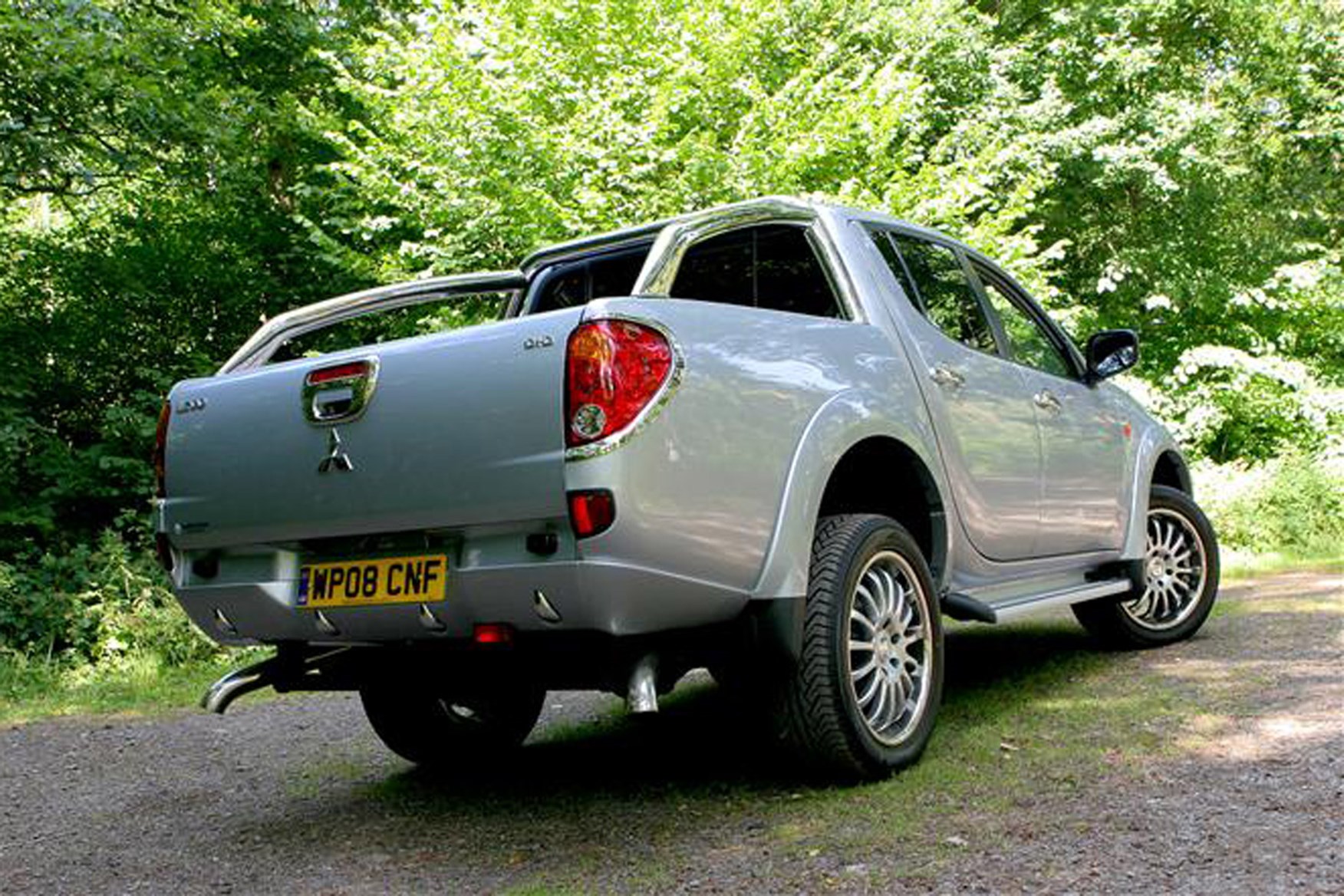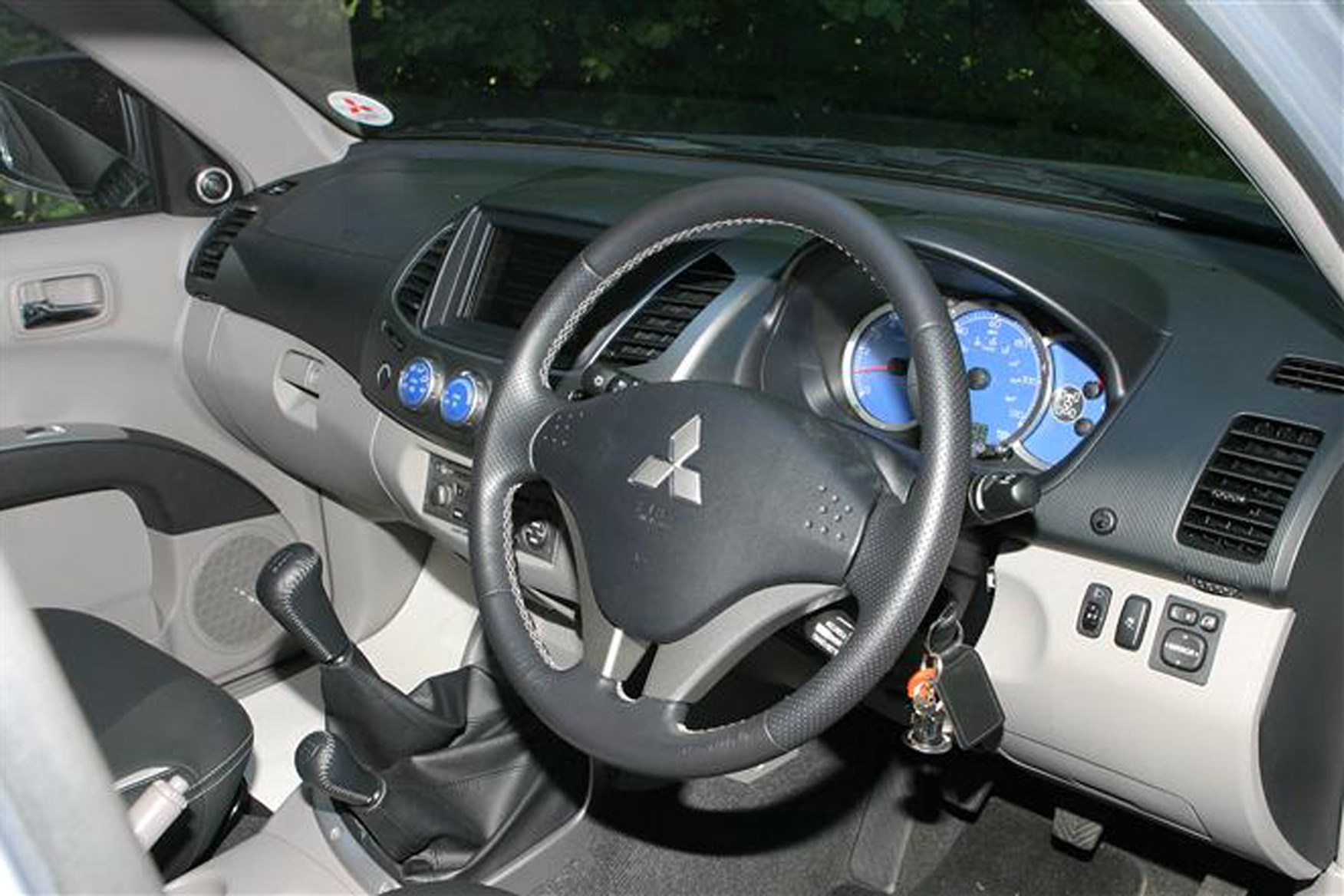Mitsubishi L200 review (2006-2015)
PROS
- Looks much more striking
- More car-like to drive
- Good value
CONS
- New diesel engine isn’t particularly smooth
- Old accessories won’t fit
Summary
The fourth generation Mitsubishi L200 was introduced in 2006 and, in light of changing consumer appetite, engineers took a completely different approach during the development stage.
Mitsubishi claims it has provided a more car-like pick-up with an emphasis on design and comfort, but it retains the practicality and ruggedness of the past model. It certainly looks much more striking and it handles and performs more like a car.

The L200 is more comfortable inside especially the Double Cab versions such as the Animal and Warrior, plus the Elegance comes with full leather and more subtle styling as standard.
The fourth generation Mitsubishi L200 was replaced by the fifth generation Mitsubishi L200 in 2015.
Skip to our full verdict on...
There is less body roll, the ride is much firmer and handling is improved, but potholes are felt more keenly.
There’s the option of a four-speed auto on the Warrior, Animal and Elegance models while the Animal gets the optional power boost of 26hp to 160hp as standard.

The all-new diesel engine (Euro IV compliant) packs 134hp and 313Nm of torque and is the only engine available. It’s strong but noisy and not very smooth.
The five-speed gearbox requires a firm action, has a long travel, and makes the most of the engine’s power. Road noise is still noticeable at 70-80mph but is quieter than the previous model.
The 4Work versions are the most basic with CD player with MP3 and manual height adjustable driver’s seat as standard.
4Life adds electric windows, manual air con, keyless entry and central locking. Warrior throws in a rear electric glass window and climate control. Animal gains sat-nav, CD autochanger and Animal graphics while Elegance steps-up with DVD sat-nav, leather, and powered and heated seats.

Driving position feels more car-like, steering wheel is tilt-adjustable and the whole interior has more of a quality feel. Double Cabs are more spacious than its predecessor especially in the rear.
Servicing intervals have increased from 9000 miles to 12,500 and that will help keep costs down.
Insurance groups start at 8E for basic single cab going up to 10E for double cab Elegance model, and fuel consumption is claimed at 32.8mpg.
L200 series has proven to be a good value-for-money pick-up. It also holds its value incredibly well.
Generations of L200 were all found to be very reliable, and this one is no different.
L200 scored a commendable four stars in Euro NCAP crash tests. All versions got new brakes as well as ABS and an electronic braking system to enhance stopping performance.
Driver and passenger air bags, pre-tension seat belts with force limiters, collapsible steering column and pedals that move back in an accident are fitted as standard.

The Warrior, Animal and Elegance versions come with an electronic stability programme that helps stop the car from skidding is sudden manouevres such as an emergency swerve or lane-change, and an upgraded four-wheel drive system fitted means four-wheel drive can be used on dry roads at any speed.
Double cab version also comes with fixing points for child seats.







